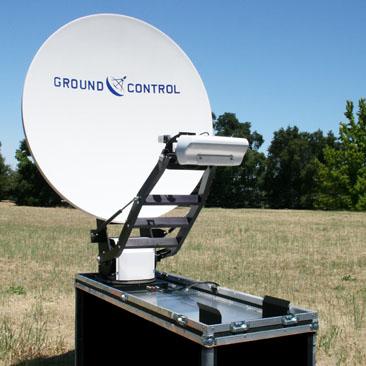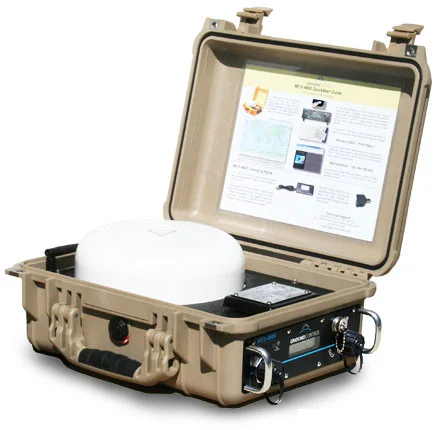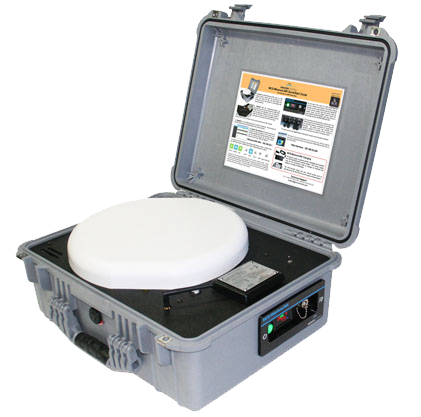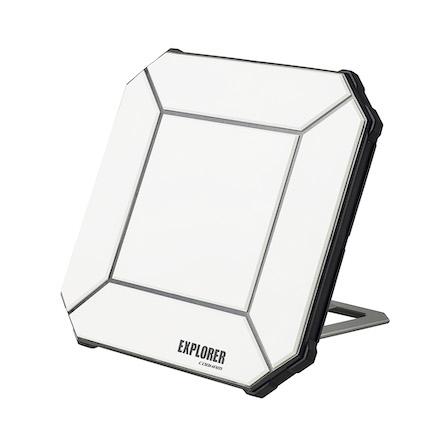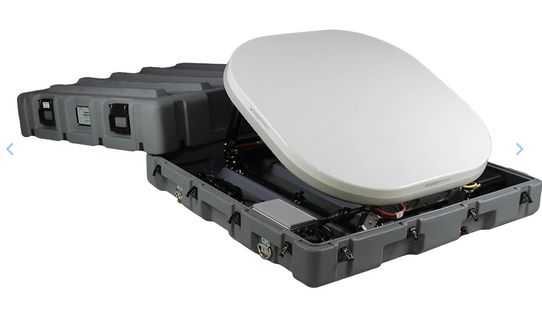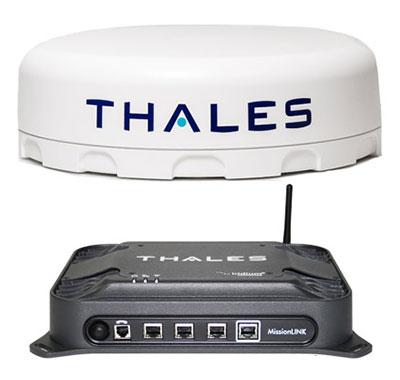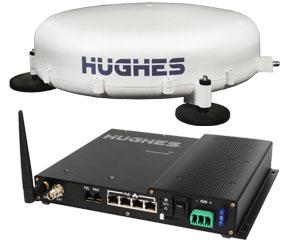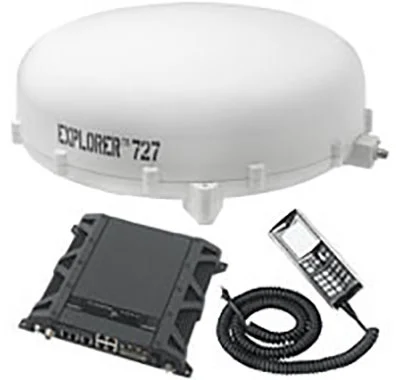Sadly, the frequency and severity of disasters in the United States is severity of disasters in the United States is increasing. Most recently, the nation’s deadliest wildfire in more than a century tore through Maui with devastating affect. As Scott Bowman, acting deputy CIO for FEMA, explains “multiple factors — including type, size and scope of the disaster — drive the use of specific communication methods.” So while SATCOM systems won’t be required for every emergency situation, speedy communications and strong connectivity will be. Whether you’re considering a SATCOMS solution as a primary communication tool or as an indispensable backup, our dedicated team is here to provide you with the information needed to make a well-informed and strategic choice.
Exploring in-demand portable SATCOM solutions
Portable SATCOM systems offer the flexibility necessary for dynamic environments. Designed to be easily transported and deployed, portable SATCOM systems enable first responders to establish vital communication links wherever they are needed most.
|
|
||||
|
Service provider:
|
||||
|
Physical Dimensions:
|
Main Case (LxWxH): 61.25″ x 21.75″ x 16″ | 149 lbs / 160 lbs
|
(LxWxH): 17″ x 13.75″ x 6.75″ | 25.3 lbs
|
(LxWxH): 20.66″ x 17.20″ x 8.40″ | 36.4lbs
|
(HxWxD): 7.8″ x 7.8″ x 1.6″ | 3.1lbs
|
|
Power:
|
Mains / Car Battery
|
Battery 5 hours
|
Battery 6 hours
|
Battery 3.5 hours
|
|
Antennae:
|
Portable auto-pointing VSAT antenna
|
Class 11 Antenna (autopointing)
|
HGA-2 Antenna (autopointing)
|
Dual band: GNSS & BGAN
|
|
Connectivity Speed:
|
20Mbps x 5Mbps
|
Up to 464 Kbps down, 448 Kbps up
|
Up to 700Kbps down, 352Kbps up
|
Up to 464Kbps down, 448Kbps up
|
|
Average Setup Time:
|
3.5 minutes | 5/10 minutes setup on ground with/without bracketing
|
1 minute
|
1 minute
|
>5 minutes
|
|
Key Features: |
Wireless Network up to 100-foot |
WiFi hotspot up to 100 meters |
WiFi hotspot up to 300 meters |
WiFi hotspot up to 100 meters |
|
Service provider:
|
Popular SOTM (Satellite-On-The-Move) equipment
SOTM systems maintain uninterrupted communication while in motion, ideal for vehicles, aircraft and even marine vessels. There has been some really exciting developments here of late, particularly with the Kymeta u8 LEO. Leveraging the OneWeb network, this innovative device is making global mobile connectivity a reality. No lag, no dropouts, no experience of slowed speeds during busy periods – just consistent, high throughput connectivity.
|
|
||||
|
Service provider:
|
||||
|
Physical Dimensions:
|
(LxWxH): 35.2" × 35.2" × 5.5"
| ~68 lbs |
Terminal (HxWxD): 2.3″ x 12″ x 9″ | 7.5 lbs
Antenna (HxØ): 4.1″ x 14.5″ | 6.2 lbs |
Transceiver (HxWxD): 1.8″ x 11″ x 9.2″ | 5.1 lbs
Antenna: (HxØ) 6″ x 18.8″ | 12.1 lbs |
Transceiver: 1.67″ x 9.72″ x 10.63″ | 5.5lbs
Antenna: (HxØ) 6.3″ x 18.76" | 13.2lbs |
|
Power:
|
Integrated ACU and power supply | 12 VDC to 36 VDC
|
10–32 VDC OR AC/DC supply with 12 VDC
|
12 or 24VDC vehicle power
|
10.5-32VDC input 150W max
|
|
Antennae:
|
Electronically scanned array
|
Electronically steered phased array
|
C10 Antenna
|
Mechanical tracking antenna
|
|
Connectivity Speed:
|
Up to 150Mbps x 30Mbps in-motion / parked
|
Up to 704kbps down, 352kbps up
|
Up to 492Kbps
|
Up to 492 kbps
|
|
Install Difficulty:
|
Easy
|
Easy
|
Moderate
|
Easy
|
|
Key Features: |
No moving parts |
WiFi range up to 300 meters |
Wireless Security: Port forwarding, MAC filtering, Firewall tasks |
Operating Temperatures: -25°C to +55°C (-13°F to +131°F) |
|
Service provider:
|
Hopefully the tables above give you some idea of the types and scope of SATCOM systems available. At Ground Control our expertise spans over 20 years in satellite communications, and more than two decades supporting and collaborating with first responders. Some of us have even served as first responders in our previous roles. So if you’re evaluating satellite communication equipment and seeking unbiased advice, feel free to reach out to us at sales@groundcontrol.com, or click to view our entire product collection.
Further, even with the comprehensive information provided above, we always emphasize the importance of practical testing. Our team has hands-on experience with various SATCOM models, and we subject all devices to rigorous internal assessments. However, the real-world operational landscape is multifaceted, with diverse environmental factors and geographic conditions that require careful consideration. So in all cases, we strongly recommend agencies test equipment on site, with their people, under conditions closely mirroring those encountered in the field. Effective preparedness demands a comprehensive approach aligned with the dynamic nature of emergency operations.
Maintaining satellite communications equipment
Finally, regular maintenance, proactive troubleshooting, and proper training are key to maximizing the performance and longevity of your satellite communications equipment. These systems can be expensive, we’d argue not as expensive as you think, but we understand how important it is for equipment to uphold effective performance. So with that in mind, below are some simple maintenance tips to ensure you get the most out of your devices.
1. Regularly inspect and test equipment
- Conduct routine inspections of your satellite communications equipment to identify any signs of wear and tear, loose connections, or physical damage
- Test network connectivity checking signal strength and quality, data transfer rates and satellite alignment
2. Check and apply new software and hardware updates to ensure optimal performance and security.
3. Monitor battery performance
- Follow manufacturer guidelines for charging, storage and replacement of batteries
- Conduct periodic battery tests and quickly replace aging or faulty batteries
4. Train team members on the proper operation, maintenance and troubleshooting of all communications equipment. Encourage prompt reporting of issues and/or abnormalities.
5. Implement backup and/or redundant systems, mitigating risks associated with equipment failure and/or service disruption. Ensure these are also included in regular inspections and tests.
Ready to take the next step?
For more information on any of our products or available airtime packages, fill in the form and our experienced team will get back to you.


